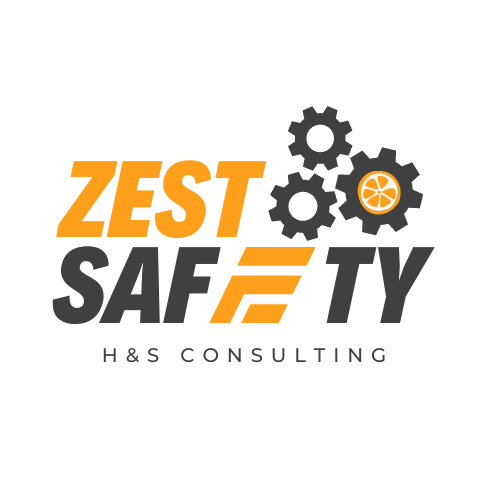Title Page
-
Client / Site
-
Location
-
Date and Time of Inspection
-
Machine Name or Description
-
Machine Number
-
Inspected by
-
Description of work to be performed
-
List down the name of employees working on machines
-
Choose the type of guards
DOCUMENTATION
-
The machine has been risk assessed previously by a competent person and identified corrective actions or recommendations have been completed / closed out?
-
A Standard Operating Procedure (SOP) is available for the machine, the SOP includes the safety hazards and warnings, and the safety procedures, and a copy is available for the operators in proximity to the machine?
-
Training records are available for all operators in a location easily accessible and unlikely to be discarded or lost (particularly if a supervisor/manager leaves the organisation)?
-
Is the machine manual available at the machine for operators to refer to?
PRE-OPERATION CHECKS
MACHINE GUARDS
-
Are all machine guards in good condition?
-
Do machine guards prevent workers hands, arms, and other body parts from making contact with dangerous moving parts of machine?
-
Are workers able to reach through the guards to the moving parts? (refer to AS/NZ.4024 reach charts)
-
Are workers able to reach over, around, or under guards to the moving parts? (refer to AS/NZ.4024 reach charts. Note gap under fences or guards at floor level should be max 180 mm).
-
Are all machine guards firmly secured and not easily removed?
-
Do machine guards ensure that no objects fall into the moving parts?
-
Do machine guards permit safe, comfortable, and relatively easy operation of the machine?
-
Are all pulleys and belts on working level properly guarded?
-
Are all moving chains and gears properly guarded?
-
Are all fan blades protected with a guard with opening not larger than the standard size?
-
Can the machine be oiled by the operator without removing the machine guards? (does not include full maintenance or servicing requirements - this just refers to the operator actions).
-
The operator can make adjustments to the machine whilst running without being exposed to moving parts or energised equipment?
-
Does the machinery automatically shut down when machine guard is removed?
-
Do machine guards prevent operators to access machinery while in operation?
-
Do machine guards protect against hazards to the rear and sides of machinery?
-
Is warning sign placed around the machine? (refer to pinch points, noise, dust, falls, slips, and other health hazards)
-
Do the guards at the time the machine is set-up protect the operator from interaction close to moving parts of the machine?
-
Do the guards protect the worker if samples have to be taken during operation?
-
Do the guards protect the operator when there is a machine jam-up, where product has to be removed?
-
Have light-curtains been checked as fully functional within the past month by a competent person?
-
Have presence sensing devices been checked as fully functional within the past 6-months by a competent person? (Refers to light curtains, pressure sensing pads, pressure sensing bumpers, laser scanners, radar detectors, AI camera detectors,
-
There are sufficient emergency stops (AS/NZ.4024 requires an E-stop at every 'operator station', at least one on a conveyor (and additional required every 30-metres along the conveyor)?
-
Pullcord emergency stops are placed in correct proximity to the hazardous area? (refer to AS.4024 - if the nip point is below 1500 mm height - the pullcord to be above that and within reach; if the nip point is above 1500 mm height - the pullcord to be below and within reach).
-
Have Emergency Stops (push button and pullcord devices) have been checked as fully functional by a competent person within the past 6-months? (requires a proper step-by-step check to be completed)
-
Is the operator protected from any pressurised system if it fails? (refers to hydraulic, pneumatic, hazardous substances systems (e.g. nitrogen / oxygen)
-
Electrical cabinets or connections are secured (preferably by a lock) to prevent the operator accessing them, and only a competent person can access them (preferably only an electrical engineer/electrician)?
TRAINING
-
Are all operators trained to the SOP and deemed competent?
-
Does the SOP include the steps to check the safeguards (interlocks, light curtains, emergency stops)?
-
Are all operators trained on how machine guards work?
-
Do operators have the necessary education and training in how to use the guards?
-
Do operators know the procedure when guards are damaged, missing or inadequate?
-
Are all operators trained on how and under what circumstances guards can be removed?
PEOPLE
-
Are all employees wearing appropriate PPE?
-
Do employees follow safe handling instruction using machineries?
-
Are all employees aware of emergency procedures in case of an accident involving machinery?
-
Is adequate supervision provided to ensure that employees are following safe machine operating procedures?
-
Do operators conduct a weekly emergency stop check (i.e. activate the E-stop and ensure the machine deactivates)?
-
Do operators conduct a weekly check that any safeguards are operating correctly? (i.e. activate the device and ensure the machine stops - refers to light curtains, pressure bads/bumpers, laser scanners, radar detectors, AI camera systems)
-
Maintenance & service personnel are trained on the Isolation-LOTO procedures and signed off as 'competent', by a competent assessor? (note: this 'assessor' can be an experienced, trained, competent operator, or manager)
POST-OPERATION
-
Are all machine guards in good condition?
-
Is lock-out tag placed when removing machine guard?
-
Are all machine updates were escalated to a supervisor?
-
Are all incidents reported to a supervisor?
MAINTENANCE
-
Maintenance and servicing is conducted using an Isolation-LOTO system?
-
Isolation-LOTO procedures are written and available for the specific machine?
COMPLETION
-
Observation or recommendations
-
Overall assessment
-
Inspector's Name and Signature
Sign-off
-
Signature of person completing the inspection

















